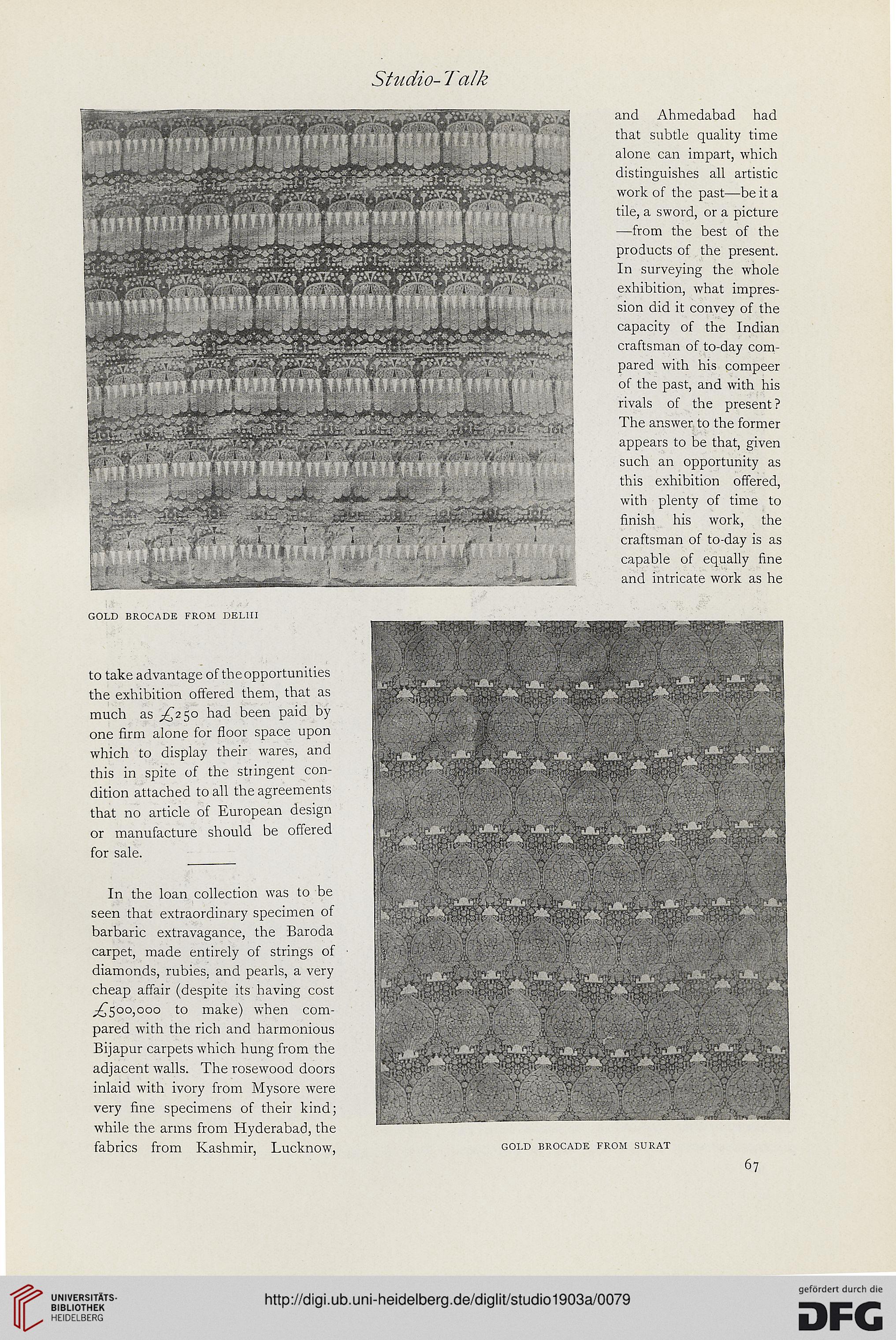Studio-Talk
'•If
and Ahmedabad had
that subtle quality time
alone can impart, which
distinguishes all artistic
work of the past—be it a
tile, a sword, or a picture
—from the best of the
products of the present.
In surveying the whole
exhibition, what impres-
sion did it convey of the
j^^^,, capacity of the Indian
craftsman of to-day com-
pared with his compeer
of the past, and with his
rivals of the present?
The answer to the former
appears to be that, given
such an opportunity as
this exhibition offered,
with plenty of time to
finish his work, the
craftsman of to-day is as
capable of equally fine
and intricate work as he
■i ■ 5
W'
. , .A ■ I
gold brocade from delhi
to take advantage of the opportunities
the exhibition offered them, that as
much as ^250 had been paid by
one firm alone for floor space upon
which to display their wares, and
this in spite of the stringent con-
dition attached to all the agreements
that no article of European design
or manufacture should be offered
for sale.
In the loan collection was to be
seen that extraordinary specimen of
barbaric extravagance, the Baroda
carpet, made entirely of strings of ■
diamonds, rubies, and pearls, a very
cheap affair (despite its having cost
^500,000 to make) when com-
pared with the rich and harmonious
Bijapur carpets which hung from the
adjacent walls. The rosewood doors
inlaid with ivory from Mysore were
very fine specimens of their kind;
while the arms from Hyderabad, the
fabrics from Kashmir, Lucknow, gold brocade from surat
67
'•If
and Ahmedabad had
that subtle quality time
alone can impart, which
distinguishes all artistic
work of the past—be it a
tile, a sword, or a picture
—from the best of the
products of the present.
In surveying the whole
exhibition, what impres-
sion did it convey of the
j^^^,, capacity of the Indian
craftsman of to-day com-
pared with his compeer
of the past, and with his
rivals of the present?
The answer to the former
appears to be that, given
such an opportunity as
this exhibition offered,
with plenty of time to
finish his work, the
craftsman of to-day is as
capable of equally fine
and intricate work as he
■i ■ 5
W'
. , .A ■ I
gold brocade from delhi
to take advantage of the opportunities
the exhibition offered them, that as
much as ^250 had been paid by
one firm alone for floor space upon
which to display their wares, and
this in spite of the stringent con-
dition attached to all the agreements
that no article of European design
or manufacture should be offered
for sale.
In the loan collection was to be
seen that extraordinary specimen of
barbaric extravagance, the Baroda
carpet, made entirely of strings of ■
diamonds, rubies, and pearls, a very
cheap affair (despite its having cost
^500,000 to make) when com-
pared with the rich and harmonious
Bijapur carpets which hung from the
adjacent walls. The rosewood doors
inlaid with ivory from Mysore were
very fine specimens of their kind;
while the arms from Hyderabad, the
fabrics from Kashmir, Lucknow, gold brocade from surat
67




